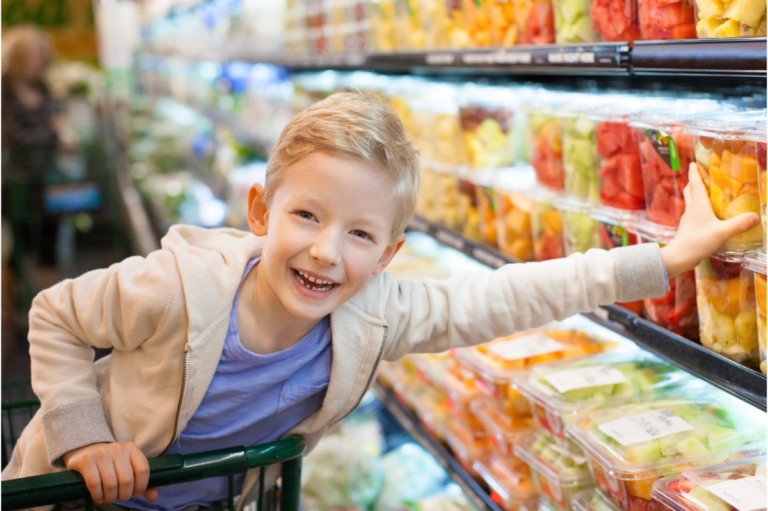Lunch is part of the Montessori experience. We encourage families to pack nutritious lunches and provide guidelines in our Parent Handbook. As we start a new school year and a new year of lunches, let’s talk about the lunch experience as a learning opportunity.
We all want to be able to take our children to a restaurant and have it be a pleasant experience. The Montessori focus area of grace and courtesy teaches children the proper expectations for making dining out or dinner at home an enjoyable experience.
The Montessori environment is one of respect—respect for self, others, and property. Eating nutritious foods that nourish our body communicates care and respect for ourselves. Children, in particular, are developing their bodies and minds. Nourishing food also feeds the mind and leads to better moods, focus, and learning.
Food is a sensory experience. As young pallets are developing, trying a variety of fruits, vegetables, seasonings, herbs, and other foods helps children experience different foods. New items can be ‘discovered’ at the store or when brought home. Helping to prepare the meals often results in a child being more willing to try new foods. Sometimes they don’t like something the first time they try it and it may, in fact, take many tries for a new flavor to be liked.
The Montessori Lunch Experience
At school, the children set their tables for lunch. They set out their meal, place their napkins on their laps, and sing words of gratitude before eating. We often have beautiful music playing in the background or the children engage in a polite conversation. Upon finishing their meal, the children clean up their items, clear their spaces, and wipe the tables. This is exercising grace and courtesy.
For each lunch, we ask parents to send a cloth napkin with their child. Having a lovely napkin for the child to place on their lap adds to the feeling of self-respect and focus during the lunch period.
Tips for the Lunch Box
Children take great pride when they have input in their lunches. Your child may want to help you plan items for their lunches for the week, grocery shop for their lunch items, and help with preparing their lunch each day. For the younger children, it can be picking out fruit at the grocery store or placing a lunch container in their lunch box. Our elementary students are very capable of planning lunches, helping to shop, and preparing their own lunches.
In addition to having your child be part of the process, here are a couple of tips for the lunch box:
- Plan a variety of foods that are easy to eat. Some ideas besides sandwiches include cheese and crackers, hummus and carrots, wraps, rollups, and yogurt.
- Warm dishes can be sent in a thermos. Soup, noodles, rice, leftover dinner are all options that children like.
- Use whole foods instead of food with a lot of additives. Think fruit and not fruit snacks.
- Children don’t need sweets at school. Aim for balanced nutrition—protein, grains, fruit, and vegetables.
- Easy-to-open containers make it so the children can manage on their own.
Parents are busy and nutritious lunches do not need to be complicated or expensive. The benefits of packing a nutritious lunch and the Montessori lunch experience for your child are numerous.
